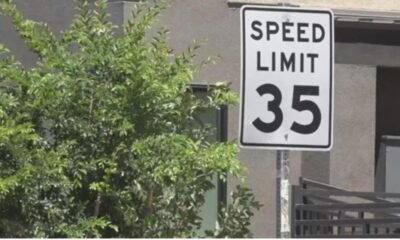General News
Photo Finish Decoded: How Noah Lyles Clinched the 100-Meter Victory

The title of “World’s Fastest Man” at the Paris Olympics came down to just .005 seconds.
PARIS, France — The men’s 100 meters final at the 2024 Paris Olympics concluded with one of the most dramatic finishes in the history of the Games.
American athlete Noah Lyles clinched the “World’s Fastest Man” title by a mere .005 seconds. The race was so close that it required a photo finish to determine the winner. Viewers on TV were unsure if Lyles or Jamaica’s Kishane Thompson crossed the line first.
The final time for Lyles was announced as 9.784 seconds, narrowly beating Thompson by five-thousandths of a second. This incredible result sparked curiosity about the technicalities of photo finishes and the criteria for crossing the finish line in Olympic events.
According to Olympic rules, a runner is deemed to have crossed the finish line when their torso crosses it, which excludes the head. This explains why many runners lean forward at the final moment to get their torsos across the line first.
Here’s the official men’s 100m photo finish image from the IOC pic.twitter.com/2a5tJY84tT
— Dan Gartland (@Dan_Gartland) August 4, 2024Diving across the finish line is legal in track events, though it’s risky and not inherently faster than running through the line. Analysis by ESPN’s Sports Science has shown that while a jump initially increases speed, acceleration decreases when the athlete is airborne.
Noah Lyles’ victory over Kishane Thompson has reaffirmed his status as the World’s Fastest Man, adding to the excitement and drama of the 2024 Paris Olympics.
NOAH LYLES’ OLYMPIC DREAM COMES TRUE! 100M GOLD MEDALIST. #ParisOlympics pic.twitter.com/qR6bkXLHhE
— NBC Olympics & Paralympics (@NBCOlympics) August 4, 2024An Olympic track measures 400 meters in length, equating to nearly a quarter mile per lap. Therefore, four laps around the track make up one mile.
In the metric system, one mile is approximately 1,610 meters. Consequently, a race spanning 10,000 meters equals about 6.2 miles, while 400 meters equals a quarter-mile.
TEGNA’s Claire Bermudez contributed to this report.


















